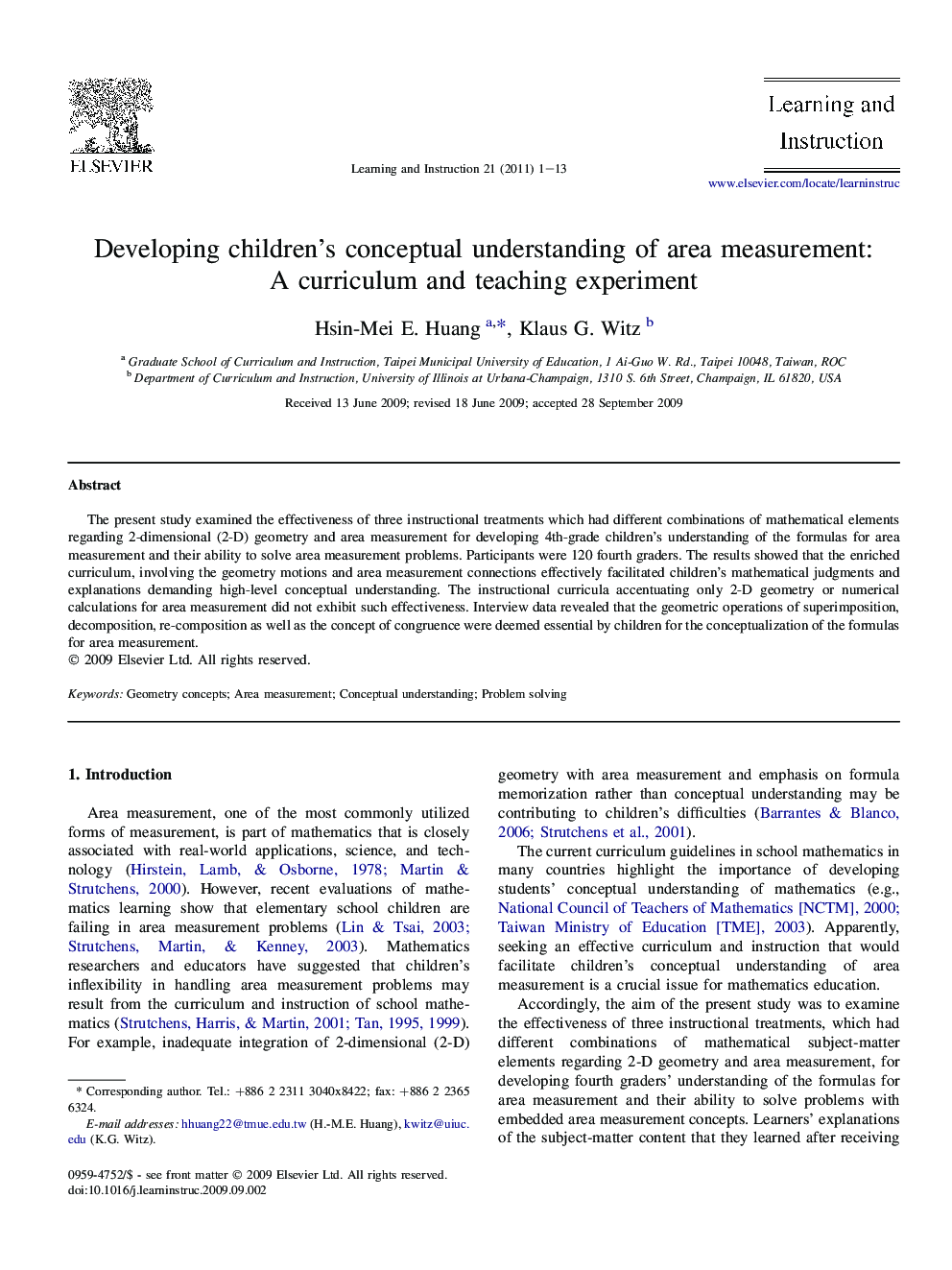| Article ID | Journal | Published Year | Pages | File Type |
|---|---|---|---|---|
| 365843 | Learning and Instruction | 2011 | 13 Pages |
The present study examined the effectiveness of three instructional treatments which had different combinations of mathematical elements regarding 2-dimensional (2-D) geometry and area measurement for developing 4th-grade children's understanding of the formulas for area measurement and their ability to solve area measurement problems. Participants were 120 fourth graders. The results showed that the enriched curriculum, involving the geometry motions and area measurement connections effectively facilitated children's mathematical judgments and explanations demanding high-level conceptual understanding. The instructional curricula accentuating only 2-D geometry or numerical calculations for area measurement did not exhibit such effectiveness. Interview data revealed that the geometric operations of superimposition, decomposition, re-composition as well as the concept of congruence were deemed essential by children for the conceptualization of the formulas for area measurement.
